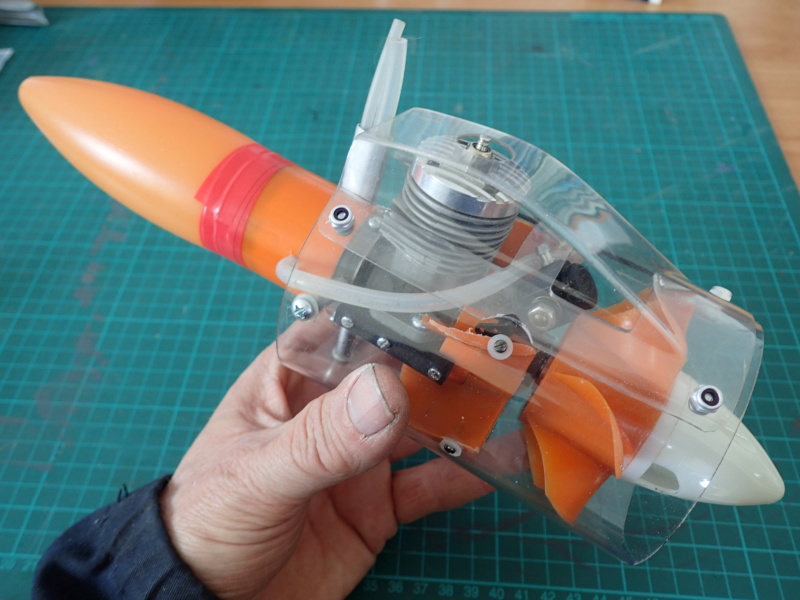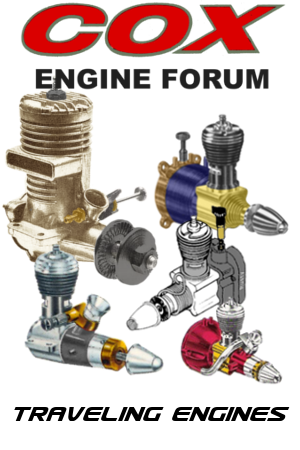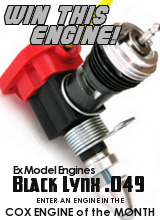Log in
Search
Latest topics
» Help Pee Wee tank cap .020by rdw777 Today at 1:30 pm
» **VOTE-ON-THE-NEXT-COX-ENGINE-OF-THE-MONTH** (May 2024)
by GallopingGhostler Today at 11:34 am
» Jim Walker Firebaby
by rdw777 Today at 10:32 am
» Here we go again... another Lawn-Boy
by rdw777 Today at 9:17 am
» Revivng Some Childhood Classics
by getback Today at 8:21 am
» Roddie-Rigger.. a 2005 original design
by getback Today at 6:31 am
» A prototype Cox Reed-valve marine engine
by roddie Yesterday at 10:50 pm
» My Cox .049 Marine inboard engine
by F4D Phantom II Yesterday at 9:33 pm
» Jim Walkers FireBee - This is going to be fun
by rsv1cox Yesterday at 7:29 am
» Post your Older books
by rsv1cox Mon May 06, 2024 7:51 pm
» EXTREMELY RARE COX THIMBLE DROME PROTOTYPE "BLACK WIDOW" GAS MODEL AIRPLANE
by rsv1cox Mon May 06, 2024 6:58 pm
» I brake for Turtles....
by rsv1cox Mon May 06, 2024 6:38 pm
Cox Engine of The Month
Fuel tank questions
Page 1 of 1
 Fuel tank questions
Fuel tank questions
As I shop for fuel tanks I am lost on the various configurations. I personally prefer bladders but a few of my lil engines will need to be fed from a tin tank. Can someone explain the various configurations, what is uniflo vs ???, and what is a chicken hopper? I always used simple wedge tanks on my profile combat .35 planes. Is there a new paradigm?
Ken has a post on here about having to rebuild some brands as he does not like location and materiel of tubing ...is it possible to get a product that does not need my bad eyes and arthritic hands messing with a hot iron?
Ken has a post on here about having to rebuild some brands as he does not like location and materiel of tubing ...is it possible to get a product that does not need my bad eyes and arthritic hands messing with a hot iron?
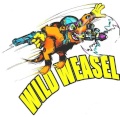
fredvon4- Top Poster


Posts : 4002
Join date : 2011-08-26
Age : 68
Location : Lampasas Texas
 Re: Fuel tank questions
Re: Fuel tank questions
Hello Fred, it's a known fact that brass and our glow fuels don't make a happy marriage together. I can only say that for years I was plagued by bad runs and problems which were only contributed to the metal hard tanks. I use tanks from all commercially available manufacturers and ALL OF THEM have leaked or had problems. GRW tanks now owned by Eric Rule RSM Distribution have been the best commercially available tanks I've been using so far. They also bring a higher price tag. This doesn't mean they don't leak due to them being brand new. It's a must to air test the tank as if your trying to pop it. This is done underwater and you will be amazed at how many pipes, end caps, seams, etc leak. All of this plays havoc with your engine run.
No one needs the engine leaning out in the overhead with the plane straight up above you when engine reliability is most needed. It's happened to me, the infamous slack lines falling back to earth with your stunter directly behind them just waiting to re-kit itself.
That being said, Brodak for instance uses a copper tube which doesn't work harden like brass, but the solder joints need to be inspected. Most commercially made tanks are built using the hot plate method in which pellets of lower temp solder is used and sat on the plate and heated to it's melting point. This is why tanks need to be checked. Soldering requires the utmost cleanliness and even after that, joints leak. So checking is a must. Not all flux has been removed from tanks and when this isn't done properly, the tanks quickly corrode inside. This is horrendous and causes damage to your engine as well if run like this. I shake a tank listening for rust rattles and loose solder. This has to be removed.
Perfect tanks are far from Perfect. They need to have their pickup tubes soldered at the rear, (Brodak solders the pickup tubes). Even though the tubes are soldered, this doesn't mean that the individual who built the tank soldered it in the correct spot. It could be short, it could also be too high, or too low. Opening up tanks in my opinion is a must. This is what makes plastic tanks a plus. These don't come without problems either. That's another story.
Unfilow tanks have a additional pipe which travels alongside of the fuel pickup. It stops about 5/16" from the rear of the pickup. Uniflow tanks MUST BE FILLED through the uniflow pipe or else when the fuel level rises in the tank it will exit the feed pipe resulting in a flooding the engine. The unfilow pipe provides a magical quality to the engine run. The uniflow pipe itself exits the tank and is pointed directly into the wind. This pipe stays uncapped and the other pipes,(filler and overflow are capped). Using unfilow on profiles presents vibration to the tank and also turbulent air over the cylinder now in front of the tank. Getting your unfilow pipe extended to clean air (typically the inboard side of the plane) is important by adding flexible tubing and placing a piece of hard tubing mounted out of the way of obstructions is importantl A standard vented tank, and we can use the wedge that most are familiar with. As the tank is full it has a lot of head pressure. The engine run is rich, as the tank empties, the head pressure is less but the engine leans and continues to lean throughout the run until empty which usually unless properly set, results in a screaming lean run cutting in and out all the to the end. This type of run maybe ok for the sport flyer, but when flying stunt, this isn't ideal. We like the smoothest steadiest run we can achieve with a clean cut off at the end.
Uniflow tanks provide terrfic runs but they also lean out slightly just not to the level a standard vented tank does.
If the plane is vibrating and the fuel is foaming, UNIFLOW WILL NOT WORK. Uniflow generally needs to be set with the engine on the ground rich, the uniflow pipe is bent at a 90 deg angle into the atmosphere and as the air pressure increases into the pipe the engine leans out usually settling into a nice 4 stroke on the verge of a 2. Sounds great I bet, I can't ever get it to work for me and this is usually on profiles which are subject to vibrations. Sometimes the uniflow pipe needs to be necked down to work properly by inserting a small piece of tubing over the 1/8" tubing. Armor All in the fuel sometimes and most of the time works to settle down the fuel foaming internally.
I like uniflow tanks for 3 reasons, I can use it as a uniflow tank. If uniflow isn't successfully working, I can cap the uniflow and overflow leaving the fill vent open and it now is a standard vented tank. I can also cap the uniflow and overflow running muffler pressure to the fill making it a standard tank on muffler pressure. It just gives you many options.
I personally hook my muffler pressure directly to the uniflow to what I refer to as uniflow on muffler pressure which seems to work the best for me. I've seen many guys use the uniflow tanks just like I stated above and have perfect results. The idea of uniflow is just to enable the engine to run at a constant speed without leaning out other than when required which would be pointing the nose up.
Chicken hoppers use a main tank and a smaller tank is grafted onto it. These tanks are most helpful like on the Mongoose you want to build and they work well on faster maneuvering models. When you have a fast maneuverable model like a Flite Streak for instance and your using a standard wedge, the maneuvers happen so fast the fuel runs away from the pickup and thus leaning the engine to the point of stalling or constantly quitting. The small sump tank on a chicken hopper has the pickup located within it. Internally is also a baffle with holes separating the main tank from the sump or the "Hopper". This allows the fuel pickup to be constantly submersed in fuel which is why it works so well. Certain engines though require these hopper tanks to be at a certain height. THis can cause DRASTIC engine changes if your not familiar with setting up the hopper tank to your engine. For instance, if your plane is flying tip low or tip high, your changing the fuel height within the tank and this can change your engine run from extremely lean to rich so having your plane flying correctly is a must. This also mean having it fly tangent to the circle which also changes your run but again, the above is more critical.
Unfilow has a very unique characteristic, the uniflow pipe is what dictates your tank height and NOT your fuel pickup like a standard tank.
This can be extremely helpful in setting your tank height on a plastic tank as all you need to do is loosen the screw on the front and rotate the rubber stopper and piping and this will change your engine run. Metal tanks need to be shimmed up or down. I make adjustable bracketing for my hard tanks. I make a piece of ply with slotted holes and I attach the hard tank to the 1/8" ply with nylon zip ties. Screws then go into to the slotted holes of the ply and are tightened to affix them at that height on the plane. If needed, I loosen the screws and slide the tank up or down if needed.
I would just purchase a tank and try it. Hopefully all goes well and this is usually the case. I just know that eventually all tanks are going to suffer a problem, vibrations do this to solder and it happens. Just put it on and go fly. Get into the tank if you feel there may be an issue. I would do an air test initially as this is simple to do. I just like to share some of my experiences and this doesn't always mean what happened to me is going to happen to the next person. I just know what can happen and why it does happen. Like I said for years I was baffled by why these problems existed. Now that I know I just want to share knowledge acquired with others as I know how frustrating the stupid stuff can be at times. Some people just deal with it but I had several problems that just baffled me and I sought out to fix them. Ken
No one needs the engine leaning out in the overhead with the plane straight up above you when engine reliability is most needed. It's happened to me, the infamous slack lines falling back to earth with your stunter directly behind them just waiting to re-kit itself.
That being said, Brodak for instance uses a copper tube which doesn't work harden like brass, but the solder joints need to be inspected. Most commercially made tanks are built using the hot plate method in which pellets of lower temp solder is used and sat on the plate and heated to it's melting point. This is why tanks need to be checked. Soldering requires the utmost cleanliness and even after that, joints leak. So checking is a must. Not all flux has been removed from tanks and when this isn't done properly, the tanks quickly corrode inside. This is horrendous and causes damage to your engine as well if run like this. I shake a tank listening for rust rattles and loose solder. This has to be removed.
Perfect tanks are far from Perfect. They need to have their pickup tubes soldered at the rear, (Brodak solders the pickup tubes). Even though the tubes are soldered, this doesn't mean that the individual who built the tank soldered it in the correct spot. It could be short, it could also be too high, or too low. Opening up tanks in my opinion is a must. This is what makes plastic tanks a plus. These don't come without problems either. That's another story.
Unfilow tanks have a additional pipe which travels alongside of the fuel pickup. It stops about 5/16" from the rear of the pickup. Uniflow tanks MUST BE FILLED through the uniflow pipe or else when the fuel level rises in the tank it will exit the feed pipe resulting in a flooding the engine. The unfilow pipe provides a magical quality to the engine run. The uniflow pipe itself exits the tank and is pointed directly into the wind. This pipe stays uncapped and the other pipes,(filler and overflow are capped). Using unfilow on profiles presents vibration to the tank and also turbulent air over the cylinder now in front of the tank. Getting your unfilow pipe extended to clean air (typically the inboard side of the plane) is important by adding flexible tubing and placing a piece of hard tubing mounted out of the way of obstructions is importantl A standard vented tank, and we can use the wedge that most are familiar with. As the tank is full it has a lot of head pressure. The engine run is rich, as the tank empties, the head pressure is less but the engine leans and continues to lean throughout the run until empty which usually unless properly set, results in a screaming lean run cutting in and out all the to the end. This type of run maybe ok for the sport flyer, but when flying stunt, this isn't ideal. We like the smoothest steadiest run we can achieve with a clean cut off at the end.
Uniflow tanks provide terrfic runs but they also lean out slightly just not to the level a standard vented tank does.
If the plane is vibrating and the fuel is foaming, UNIFLOW WILL NOT WORK. Uniflow generally needs to be set with the engine on the ground rich, the uniflow pipe is bent at a 90 deg angle into the atmosphere and as the air pressure increases into the pipe the engine leans out usually settling into a nice 4 stroke on the verge of a 2. Sounds great I bet, I can't ever get it to work for me and this is usually on profiles which are subject to vibrations. Sometimes the uniflow pipe needs to be necked down to work properly by inserting a small piece of tubing over the 1/8" tubing. Armor All in the fuel sometimes and most of the time works to settle down the fuel foaming internally.
I like uniflow tanks for 3 reasons, I can use it as a uniflow tank. If uniflow isn't successfully working, I can cap the uniflow and overflow leaving the fill vent open and it now is a standard vented tank. I can also cap the uniflow and overflow running muffler pressure to the fill making it a standard tank on muffler pressure. It just gives you many options.
I personally hook my muffler pressure directly to the uniflow to what I refer to as uniflow on muffler pressure which seems to work the best for me. I've seen many guys use the uniflow tanks just like I stated above and have perfect results. The idea of uniflow is just to enable the engine to run at a constant speed without leaning out other than when required which would be pointing the nose up.
Chicken hoppers use a main tank and a smaller tank is grafted onto it. These tanks are most helpful like on the Mongoose you want to build and they work well on faster maneuvering models. When you have a fast maneuverable model like a Flite Streak for instance and your using a standard wedge, the maneuvers happen so fast the fuel runs away from the pickup and thus leaning the engine to the point of stalling or constantly quitting. The small sump tank on a chicken hopper has the pickup located within it. Internally is also a baffle with holes separating the main tank from the sump or the "Hopper". This allows the fuel pickup to be constantly submersed in fuel which is why it works so well. Certain engines though require these hopper tanks to be at a certain height. THis can cause DRASTIC engine changes if your not familiar with setting up the hopper tank to your engine. For instance, if your plane is flying tip low or tip high, your changing the fuel height within the tank and this can change your engine run from extremely lean to rich so having your plane flying correctly is a must. This also mean having it fly tangent to the circle which also changes your run but again, the above is more critical.
Unfilow has a very unique characteristic, the uniflow pipe is what dictates your tank height and NOT your fuel pickup like a standard tank.
This can be extremely helpful in setting your tank height on a plastic tank as all you need to do is loosen the screw on the front and rotate the rubber stopper and piping and this will change your engine run. Metal tanks need to be shimmed up or down. I make adjustable bracketing for my hard tanks. I make a piece of ply with slotted holes and I attach the hard tank to the 1/8" ply with nylon zip ties. Screws then go into to the slotted holes of the ply and are tightened to affix them at that height on the plane. If needed, I loosen the screws and slide the tank up or down if needed.
I would just purchase a tank and try it. Hopefully all goes well and this is usually the case. I just know that eventually all tanks are going to suffer a problem, vibrations do this to solder and it happens. Just put it on and go fly. Get into the tank if you feel there may be an issue. I would do an air test initially as this is simple to do. I just like to share some of my experiences and this doesn't always mean what happened to me is going to happen to the next person. I just know what can happen and why it does happen. Like I said for years I was baffled by why these problems existed. Now that I know I just want to share knowledge acquired with others as I know how frustrating the stupid stuff can be at times. Some people just deal with it but I had several problems that just baffled me and I sought out to fix them. Ken

Ken Cook- Top Poster

- Posts : 5476
Join date : 2012-03-27
Location : pennsylvania
 Re: Fuel tank questions
Re: Fuel tank questions
Ken, I am always astounded at you helpful and thoroughly written answers and opinions
Thank you
I got the Mongoose kit through Bernie. One of my three Enya .35s for motivation. Since this is front yard fun fly and not competition I will get both a hopper and uniflo and teach self via your advice on how to test, modify, and use them.
Thank you
I got the Mongoose kit through Bernie. One of my three Enya .35s for motivation. Since this is front yard fun fly and not competition I will get both a hopper and uniflo and teach self via your advice on how to test, modify, and use them.

fredvon4- Top Poster


Posts : 4002
Join date : 2011-08-26
Age : 68
Location : Lampasas Texas
 Re: Fuel tank questions
Re: Fuel tank questions
Ken is the go-to guy for many of your modeling quandaries. A greenie for the man.fredvon4 wrote:Ken, I am always astounded at you helpful and thoroughly written answers and opinions
Thank you
_________________
Don't Panic!
...and never Ever think about how good you are at something...
while you're doing it!
My Hot Rock & Blues Playlist
...and never Ever think about how good you are at something...
while you're doing it!
My Hot Rock & Blues Playlist

RknRusty- Rest In Peace

- Posts : 10869
Join date : 2011-08-10
Age : 68
Location : South Carolina, USA
 Re: Fuel tank questions
Re: Fuel tank questions
I probably should've mentioned this, most chicken hopper tanks are already plumbed for uniflow such as the GRW or Eric Rule Chicken hoppers. The tanks in my opinion are very good quality and the runs will certainly benefit from using them. Any tank can really be plumbed for uniflow. I've added uniflow to many tanks and I've also tried making some of my wedges into uniflow but I didn't have success using them. Certain shape tanks just work better than others. Ken

Ken Cook- Top Poster

- Posts : 5476
Join date : 2012-03-27
Location : pennsylvania
 Re: Fuel tank questions
Re: Fuel tank questions
If I understand uniflo correctly you are describing 3 tubes exiting the tank...fill, pickup to the outside rear, and a vent tube next to pickup but shorter inside. I assume the pick up tube is always the outside most tube but when I look at the various tanks on Brodak site I get confused. Perhaps I am just over-thinking this but at those prices I want to get the correct configuration for .35 profile attached behind the engine

fredvon4- Top Poster


Posts : 4002
Join date : 2011-08-26
Age : 68
Location : Lampasas Texas
 Re: Fuel tank questions
Re: Fuel tank questions
Fred, your correct, 3 tubes exiting the tank. This can be a little more confusing on tanks that Brodak lists as ATF. This just means all tubes forward exiting the end cap. Some of the tanks are designed for profiles while others are designed around full bodied stunters. On a profile for instance with two pipes exiting the top or front that the furthest most outboard pipe SHOULD be the fuel pickup tube. The inner should be the uniflow. Typically for me, I'm running muffler pressure to the uniflow pipe. In the event you can achieve a decent run with uniflow to the atmosphere, your better off. Like I mentioned above, you have a few options when using a tank like this. One thing I found using my smaller mill Enya's is that they run well on uniflow. Ken

Ken Cook- Top Poster

- Posts : 5476
Join date : 2012-03-27
Location : pennsylvania
 Re: Fuel tank questions
Re: Fuel tank questions
I found some pages that may help. I suppose I could type a similar explanation but...
http://www.fraserker.com/heli/uniflow/how_uniflow_works.htm
http://www.cadclassics.net/uniflow%20tank.html
http://www.bjm-home.com/BJMEnterprises/page59.html
I am kicking around doing a uniflow RC tank without pressure on an airplane I have been trying to set up.
The basic idea of uniflow is the same as holding a glass upside down in the sink full of water. The glass stays full. If you now have a vessel with two tubes at the very bottom, when air is introduced to to one the exact same amount of fluid comes out the other. Flip it around and remove fluid through one and the air is introduced through the other.
There is no pressure difference between the vent (air, slipstream pressure, exhaust pressure, or crankcase pressure) and the feed (fuel). The pressure at both points is equal, since they are under the same column of fluid. In the real world there are small differences, due to vibration, tank flex, and other real factors, but the general effect is the fuel feed remains constant. Changing the pressures on different parts of the system will change the fuel feed as a result, which is why the tuning on the ground is different than the engine will fly at. Just a failing between theory and reality.
Phil
http://www.fraserker.com/heli/uniflow/how_uniflow_works.htm
http://www.cadclassics.net/uniflow%20tank.html
http://www.bjm-home.com/BJMEnterprises/page59.html
I am kicking around doing a uniflow RC tank without pressure on an airplane I have been trying to set up.
The basic idea of uniflow is the same as holding a glass upside down in the sink full of water. The glass stays full. If you now have a vessel with two tubes at the very bottom, when air is introduced to to one the exact same amount of fluid comes out the other. Flip it around and remove fluid through one and the air is introduced through the other.
There is no pressure difference between the vent (air, slipstream pressure, exhaust pressure, or crankcase pressure) and the feed (fuel). The pressure at both points is equal, since they are under the same column of fluid. In the real world there are small differences, due to vibration, tank flex, and other real factors, but the general effect is the fuel feed remains constant. Changing the pressures on different parts of the system will change the fuel feed as a result, which is why the tuning on the ground is different than the engine will fly at. Just a failing between theory and reality.
Phil

pkrankow- Top Poster

- Posts : 3025
Join date : 2012-10-02
Location : Ohio
 Re: Fuel tank questions
Re: Fuel tank questions
Thank you fellows, I am now equipped to select and use the right tanks. Very good primers
In fact I was starting to remember Magazine articles from decades past... glad I disposed of the hundreds of pounds of paper. Would take me months to find this information.
I love forums and this is one of the very best because of the folks here willing to type their knowledge and advice
In fact I was starting to remember Magazine articles from decades past... glad I disposed of the hundreds of pounds of paper. Would take me months to find this information.
I love forums and this is one of the very best because of the folks here willing to type their knowledge and advice

fredvon4- Top Poster


Posts : 4002
Join date : 2011-08-26
Age : 68
Location : Lampasas Texas
 Similar topics
Similar topics» The Osprey in its native habitat - Trim and fuel tank questions
» Fuel supply for my TD, questions and answers
» WTB: RR-1 Fuel Tank
» JR SATAN Build
» Cox Fuel Tank Tip
» Fuel supply for my TD, questions and answers
» WTB: RR-1 Fuel Tank
» JR SATAN Build
» Cox Fuel Tank Tip
Page 1 of 1
Permissions in this forum:
You cannot reply to topics in this forum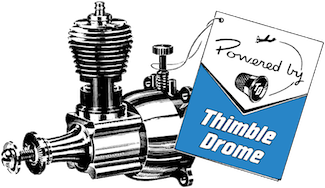

 Rules
Rules
